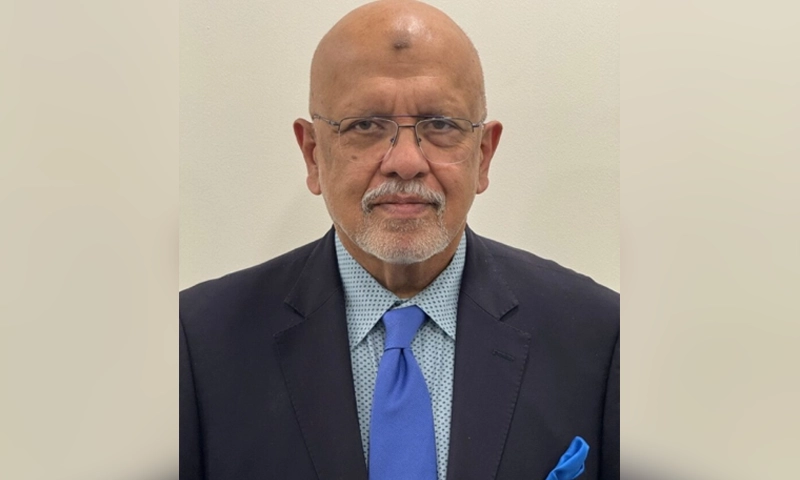- Web Desk
- Nov 12, 2025
Flood devastation leaves Pakistan with hard choices
The ongoing, unusually intense monsoon rains and floods, among the longest and harshest in Pakistan’s history, have dealt a severe blow to the economy still recovering from the past crisis. It damaged infrastructure, crops, livestock, housing, and livelihoods, along with causing significant human loss. While the government remains focused on rescue and relief, it will take time to assess the full extent of public and private losses. However, the scale and severity of the disaster make it clear that recovery, resettlement and rebuilding will demand substantial resources.
Even if the government redirects contingency and development budgets toward rehabilitation and reconstruction, the available funds are likely to fall short of what’s needed. Initial estimates suggest the required resources may run into tens of billions of dollars. Limited public finances, coupled with political divisions among lawmakers, risk delaying urgent relief and recovery efforts. Swift action is critical: a rapid assessment and coordinated resource mobilization, both domestically and internationally, are essential to meet the challenge, alleviate the suffering of displaced communities, and minimise broader economic and social fallout, especially for the most vulnerable.
According to official sources, the 2022 floods caused economic damages exceeding $40 billion. “Torrential rains, five to six times the normal levels, in August 2022 affected an estimated 33 million people,” a senior official shared privately. “The disaster left around 1,700 dead, destroyed two million homes and killed over 100,000 livestock”.
A United Nations Development Programme (UNDP) report on the 2022 floods observed: “The year 2022 will be remembered as a profoundly challenging period for Pakistan, marked by growing macroeconomic and fiscal pressures, a cost-of-living crisis hitting the most vulnerable, and cataclysmic floods whose impact was intensified by climate change.”
According to the Migration Policy Institute, the 2022 floods displaced eight million people across Pakistan, including many farmers who abandoned their land and migrated to urban areas in search of safety and livelihood.
The World Bank’s assessment projected total damages from 2022 floods at over $14.9bn, with economic losses reaching about $15.2bn. The estimated cost of rehabilitation and reconstruction stood at $16.3bn, excluding the substantial additional investments required to enhance Pakistan’s climate resilience and support long-term adaptation beyond restoring damaged assets.
The 2025 Climate Risk Index, based on 2022 data, ranked Pakistan among the most severely affected countries. That year’s catastrophic floods submerged nearly one-third of the country, inflicted $14.8bn in damages, and $15.2bn in economic losses, and pushed an estimated nine million people into poverty.
The 2025 floods are reported to be even larger in scale than those in 2022, potentially exposing more people to displacement, asset and livelihood losses, malnutrition and serious health risks. This may be why PPP leader Bilawal Bhutto has urged the government to engage the global community for support in responding to the unfolding humanitarian crisis.
Prime Minister Shehbaz Sharif, however, has announced that Pakistan will undertake the post-monsoon rebuilding using its own resources, without seeking international assistance. This preference for self-reliance, despite the heightened risks to food and health security, may stem from the country’s experience during the 2022 floods, when pledges of global support were slow to materialise or fell short of expectations.
Finance Minister Muhammad Aurangzeb last week admitted to reporters that Pakistan had failed to develop sufficient investable projects to tap into the $11 billion pledged at the 2022 Geneva conference for flood recovery. This shortfall, he acknowledged, significantly limited the country’s ability to benefit from the promised international aid. To date, only $2.8 billion of the committed funds has been disbursed, primarily from major donors such as the World Bank, ADB, China, and AIIB. Aurangzeb stressed that the absence of well-prepared project proposals was a key factor behind limited uptake of foreign support.
Echoing the finance minister’s concerns, Younus Dagha, former Sindh minister and federal secretary, and current Chairman of the Policy Research and Advisory Council at Karachi Chamber of Commerce and Industry, emphasised that the real challenge lies in preparing viable, well-structured projects rather than securing funding.
“The issue is less about money and more about project readiness,” Dagha noted. “Climate-related interventions are complex and require a robust framework, including AI-driven information systems, advanced infrastructure design, reimagined cropping patterns, and climate-resilient farming practices, to mitigate the changing weather patterns and enable predictive, efficient responses”.
He stressed the need for an integrated disaster management system that is conceptualized and implemented holistically, spanning from districts-level planning to coordinated efforts at the provincial and federal levels.
Majyd Aziz, former President Karachi Chamber of Commerce and Industry, endorsed Prime Minister Shehbaz Sharif’s stance to rebuild using domestic resources. “Pakistan has endured repeated tragedies, from floods and earthquakes to terrorism, but now is the time to respond through self-reliance, not global appeals,” he stated. While climate change fuels disasters, he blamed the lack of strategic foresight and preparedness for the scale of damage. Aziz warned severe agriculture losses, especially cotton, wheat and rice, which will drive food inflation and deepen supply shortages. In absence of social safety nets and adequate healthcare infrastructure, the fallout will be particularly harsh for poor. He added that limited foreign exchange will likely be diverted to food imports, hampering industrial activity, exports, and tax revenues. “This is a test of national resilience. The private sector must step up and support the government’s domestic-led recovery.”






